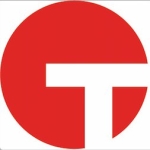How has it helped my organization?
Each component that we have purchased from Trend Micro has its own unique value set. But as CISO, the most excitement in my day is when a Zero Day initiative lands. It's one of those things that, by nature, you're generally not prepared for, and the initial reaction of the security team was, "What are we going to do about this?"
When that happened, I suggested we look at our Trend Micro IPS and see if there are any vaccines related to the particular Zero Day, and there were. We enabled those vaccines and we could see, using the ExtraHop appliance, that the issues we were seeing before had been remediated. That particular experience was a predictor of what was to come. Since then, on almost every occasion, we have had a mitigating response in our arsenal to any type of Zero Day attack before the attack actually occurs.
And even when we got into a situation like Log4j and there wasn't anything in our arsenal to deal with it, we called Trend Micro, and they said, "Yeah, we're delivering it right now, but you'll have to install it manually." And I was thinking, "I'll install it while upside down if I have to, but the bottom line is just get it over here." We deployed it and—problem solved. I believe they own that VDI initiative and it's really good that they're so close to it. That is something that has really really made my life a lot easier. Running around with your hair on fire is not fun.
In essence, it has allowed us to get a handle on our security initiatives and planning, and construct security over the long term. We've been working with them for at least ten years.
What is most valuable?
Their toolset integrates well with our existing infrastructure. It integrates well with our AT&T AlienVault SIEM.
Another piece that makes Trend Micro kind of unique—and I could see where they might have had a problem kicking the whole thing off—is that they were one of the companies, early on, that spent a lot of time integrating their toolsets, and I was really impressed with that. That meant the endpoint management system could reach out to the Deep Discovery system on the network and pick up something that it perceived as a suspicious object. It could then sandbox it and monitor it. If that suspicious entity reached out for command and control or did something nefarious, the endpoints would be alerted and would start getting rid of the problem.
The issue this addresses—and it's one of the most important issues—is that you really have to consider automation and be conscious of it. Because when the stuff hits the fan, you're not necessarily fast enough, as a human being, to get everything done the way it needs to get done—and document the process.
You might not think about that last piece so much when you start doing security engineering. But when you get into a big healthcare company like ours, there are audits going on all the time. The auditors will want to pick out two or three events that you've dealt with and say, "We want to see the audit trail," et cetera. As a result, there are advantages to the integration of Trend Micro's disparate toolsets.
Trend Micro has worked very hard on making their toolsets, like IPS, Deep Discovery, Deep Security, et cetera, talk to each other and work together. And they're still doing it today.
They have made their IPS an application rather than an appliance. You install it on the endpoint, which is a server in your data center, and it will actually configure it to a minimal standard. That means the applications and the version of the operating system you're running, right down to the colonel version, get only the tools installed that are needed for that particular instance.
They minimize the installation because they don't want you looking for bugs and indicators of compromise that you're not in a position to experience because you're using an operating system that isn't vulnerable to them. That gets rid of a lot of overhead when it comes to server management. They keep in mind that these are servers that have a job to do. They're not just desktops, and if they're eating up a lot of the CPU, that's bad for us because we're out to do business and make money. We've never had a problem with them. It's really reliable, once you get it set up.
What needs improvement?
When you deploy these tools from Trend Micro, the integration and getting them to work together, are among the more difficult pieces of the puzzle. But when you get that set up and working, you're glad you did.
When you manage a security department for a number of healthcare organizations and deploy security into their environments, they want it done today. And they certainly don't want to be bothered with it over the course of a few weeks. We've been in our Cloud One migration for a couple of months now and it isn't our only project. We've got a lot of things going on here and at our subsidiaries, for which I'm also the CISO. It's very busy. We don't have time to sit down and work on projects just for the sake of having the resources to work on them.
When we invest the time to integrate disparate resources, appliances, and applications, we do so with the idea that we're going to get something out of it that is worth more than what we put into it. In each and every case, that's what has happened with Trend Micro.
Still, a lot of folks I know have adopted their technology but have not integrated it. The endpoint management tool sits on the endpoint and manages it, but it's not fully integrated with, for example, the sandbox. So it would be nice if they could simplify the integration process. And I would like to see better documentation.
Another point is that, with Vision One, there were issues that we experienced with the IPS and EDR technologies when we first got it. We had some difficulties figuring out how to make it dance. Once we figured it out, we were okay.
The remediation they put in place for that was to increase the number of presentations they did on the software, presentations where they answered questions. We attend one about every two to four weeks with Trend Micro to go over things, and it's not just us. There are 70 to 100 people in those meetings. They figured out that, while it's okay to build reasonably complex systems, at some point you have to pass the knowledge along to the end-users. That's not always easy to do. Most companies operate under the mindset that, "Well, we understand it, why don't you understand it?"
For how long have I used the solution?
We started the integration of Trend Micro Vision One three or four years ago.
What do I think about the stability of the solution?
Trend's gear is very stable and reliable. In this business, it almost has to be because, if your system goes down frequently, you just don't have time to mess with it. In the years we've had their IPS deployed, and that's a complicated product, we may have had one or two failures. And as I recall, it was something in a power supply. If your primary failure is something to do with a power supply once every ten years, you're in good shape.
It's the same thing with all of their technology. The way they design it, just keeps running and that's not necessarily always the standard in the industry. For example, I finally had to abandon IBM's IAM solution because it was so bad. It would just break. We don't have those problems with Trend Micro. Their stuff just works. It's really good and well-designed.
What do I think about the scalability of the solution?
It's reasonably scalable, but remember that, as you're scaling out, some of the components need to be scaled while other components just need to be reconfigured. You don't want to be paying for what you don't need, meaning you don't necessarily have to double everything. When you scale out, you have to give it some thought.
How are customer service and support?
Their tech support people are better than most. In my career, I have seen it all. But Trend Micro support is really good. They're the best vendor I have for support.
Anytime we've had an issue with their gear, they have been prompt and have gotten on it and gotten it fixed. And if they can't fix it, they replace whatever they have to replace.
Another aspect with Trend Micro that is really good is that they listen to what you say. If you come up with a use case that they don't currently have, they'll add it to their repertoire and, a couple of updates down the road, there is that tool you needed. It's just a well-driven and well-run company when it comes to that side of things.
For example, in the beginning, using the dashboard was a little bit tricky. But the cool thing they did was to hold biweekly meetings on it. They would not only go through use cases, but at the end they would ask, "What else would you like to see? How would you enhance this?" Once the CISO community got a hold of that, they were coming with their guns loaded and saying "I'd like to see this and I'd like to see that." And Trend Micro started knocking out the ones that made sense. As of today, it's a completely different ballgame than it was back then. They're constantly upgrading their platforms.
And they don't absolutely have to do large releases to get things into the users' hands. They'll build something out and say, "Hey, we've included this. Try it out and let us know what you think." Most companies would say, "That feature will be in Release 5 and not until that release. Release 5 is slated for May, but it probably won't be out until October." Trend Micro is not like that and we appreciate that.
How would you rate customer service and support?
Which solution did I use previously and why did I switch?
We go back quite a way with Trend Micro. When I first met with them, it was a sales guy at Torrey Pines resort who was meeting with individuals. A bunch of CIOs and CISOs were brought together there and put up for a few days to meet with various salespeople. It was a "getting-to-know-you" event and I did it every year. One of the sales guys was from Trend Micro and I didn't know anything about them but I was impressed with his presentation. I thought to myself at the time, "Keep this one in mind. Think about this a little bit."
About a year or so later, when, at the time, we were using the IBM endpoint suite, IBM decided to take it down. It had about five different toolsets, one of which was IBM BigFix, which is a patch management solution that we still have.
They said that if you want to replace them with what was called, at the time, Trend Micro OfficeScan, you can, and we did. When we migrated to OfficeScan to replace the endpoint piece, we realized that the other IBM pieces were all up in the air except for BigFix. We then just blocked out IBM tools for Trend Micro tools, component by component. That worked out really well for us because the Trend Micro toolset was a lot more comprehensive than the IBM tools. And it integrated well with our BigFix infrastructure. It all just worked together. It was a no-brainer. Trend Micro built much better security systems than IBM did.
Once we had OfficeScan in place, we started talking about purchasing an IPS. I generally do a proof of concept when I'm going to purchase something. Trend Micro's TippingPoint IPS system was included in the eval. What I found is that it's not only the best product, but it has the best product support and that really makes a difference.
We're using Trend Micro on just about every front that they work on. They've been a tremendous partner for us, really good.
When we first kicked off the security department here, one of the problems we had was that we were chasing malware up and down the wire. We had McAfee endpoint management software and antivirus at that time, but we couldn't run it because, if we did, it would eventually eat up all the CPU and tip over the desktop.
We were looking for a replacement for that. We took a look at Trend Micro's Vision One technology and we found that they were deeply interested in what they refer to as attack surface management. It integrates the Trend Micro EDR tool that we had and turned it into something that can trace backwards. It could not only detect that an event had occurred, which is what we used to get, but now gave us information about what led up to that event. What sequence of events happened in our platforms that led up to it? We could trace it backwards, and that's the XDR component. They replaced the EDR component and that's when we got into business with Vision One.
Since then, we have deployed the Deep Security and Deep Discovery components. in addition to their IPS TippingPoint and their endpoint. We also have their email security solution in place.
The Deep Security toolset sits in your data center on every server instance you want protected. The operating systems Trend Micro supports are Windows, Linux, Solaris, and AIX. And what do we deploy in our organization? Those four operating systems. I thought, "That is like a message from God himself." I was taken aback by that.
And right now, we are migrating into their Cloud One environment. That takes it to the next level and allows us to take advantage of the analytics that exist in the cloud without having to set up all of the infrastructure to support it. Everything we have remains as is, on-prem, but everything now reports up to the cloud, and that information is enhanced and further aggregated into more meaningful data, which then comes back down into our purview. That's what the Cloud One approach is all about.
They are a pretty cool company and they're really well organized and well managed.
How was the initial setup?
The initial deployment is always the toughest because you've never done it before. You're going to run into issues that you aren't familiar with. As you go from OfficeScan to Apex One, to Vision One to Cloud One, it gets easier every time you do it because you know what's coming.
By then, you already have an established group of people who support you, and who have been supporting you for some time. You're familiar with working with them, you know what to expect and how things are going to roll forward. And you pretty much know what the time frame is going to be. That part is all good.
Vision One is on-prem. We started building data centers a long time ago and I had the honor and privilege of doing that. We built out redundancy at the data center level so there are two of everything. And then you think, "Well, what happens if something happens to the data center?" So we built another one. And then we realized we wanted it somewhere else because we get enough earthquakes in Southern California to know that nothing is safe here. As a result, we built one out in Arizona and we mimicked what we had here and then whammed it all together. So we can fail over here or to the Arizona facility. We essentially have two private clouds that we manage. That got us to where we were about a year ago.
And then, suddenly, there was the idea of moving up into the cloud. We did start working with Azure and AWS to move items into the cloud, but there were some issues with that too.
For example, if we build out a big piece of infrastructure in our data center, we purchase the hardware and then deploy it. All of that hardware is CapEx and you can write off the cost of most of it over a period of years. When you move into the cloud, you don't get that break, and if you're taking advantage of somebody else's infra, they're going to be charging you for that service. While I'm no expert on the cloud, we have put together some cloud-based applications, but, from a financial standpoint, it is really expensive. You don't get that CapEx back into your pocket like you do when you're putting together your own data centers.
Our management still wants to put more stuff up in the cloud, so we'll continue to do that, and Cloud One allows you to do that with the workload security features.
What about the implementation team?
We did it all in-house. I found someone who had already worked in security, within our company, and brought him onto my team. If you can find somebody who has already done this job and understands it, then not only can you have them deploy it immediately, which takes that piece off the table, but they are in a position to start learning other things because they already know the infrastructure that you're deploying really well. At every opportunity that I had to grab somebody who already had experience, and was good with what they did, I did so. It helps to get experienced people.
What was our ROI?
I've always felt that automation and the integration of platforms were going to be the key to this.
The reason I felt that way was that I didn't go into security when I got out of school. I was fortunate enough to get a job at the NCR Systems Engineering division. I built and designed microprocessors, and then I built operating system software for the microprocessors. I was exposed to a lot of what's going on in the bowels of the beast. Although the beast changes from company to company, you have an idea of what's actually going on.
I then started my own company and what I learned was that integration of elements is key to your success, as was automation. You need to automate solutions because you don't want a bunch of people trying to fix things if you can automate things and take care of problems.
When we look at the logs from the IPSs, for example, they're blocking hundreds of thousands, and sometimes millions, of packets a day. If we were allowing those packets in, I don't know what would happen, but I don't think it would be good.
Also, I don't have a big staff under me. The idea that, as a chief information security officer, you're going to get a couple of hundred people to go work on things is just not going to happen. So you really have to set things up and configure them for automation, and any kind of alerting has to point to the problem rather than tell you where to start looking.
What's my experience with pricing, setup cost, and licensing?
They have a new pricing method and we haven't been pulled into that yet, which I'm grateful for. It's tough enough dealing with dollars, but with their new solution—and I'm not up on it because I haven't used it yet—you buy tokens or some kind of points and you purchase things with them. We haven't gone there. We stayed with what we had.
From a pricing standpoint, they're a really good negotiator and they'll work with you. At the first Trend Micro conference I attended, there was a presentation to their sales team and they were told, "Do not worry about making money. Just make our clients happy, and the money will come." They're good at that and a lot better than most companies. It's always good to have a good partner.
Which other solutions did I evaluate?
We looked at the new stuff that IBM was coming out with, which wasn't that new, so they didn't get very far in our evaluation. We also looked at McAfee and another company that was a startup at the time, although I don't remember its name.
I had three or four vendors in for PoCs, and I asked each one of them for someone to support the effort, and to give me about a month. By the time I was done, I not only got the best product, but the best vendor too. The support has to be there during that process or they're not going to win the day. Some of them were as bad as, "Here it is, let us know how it fares." And I was thinking, "Well, I may have a few questions between now and then. I hope somebody is on the phone to answer them," but you don't always get that luxury. But Trend Micro was really good and that's why I stuck with them.
Which deployment model are you using for this solution?
On-premises
Disclosure: PeerSpot contacted the reviewer to collect the review and to validate authenticity. The reviewer was referred by the vendor, but the review is not subject to editing or approval by the vendor.




















